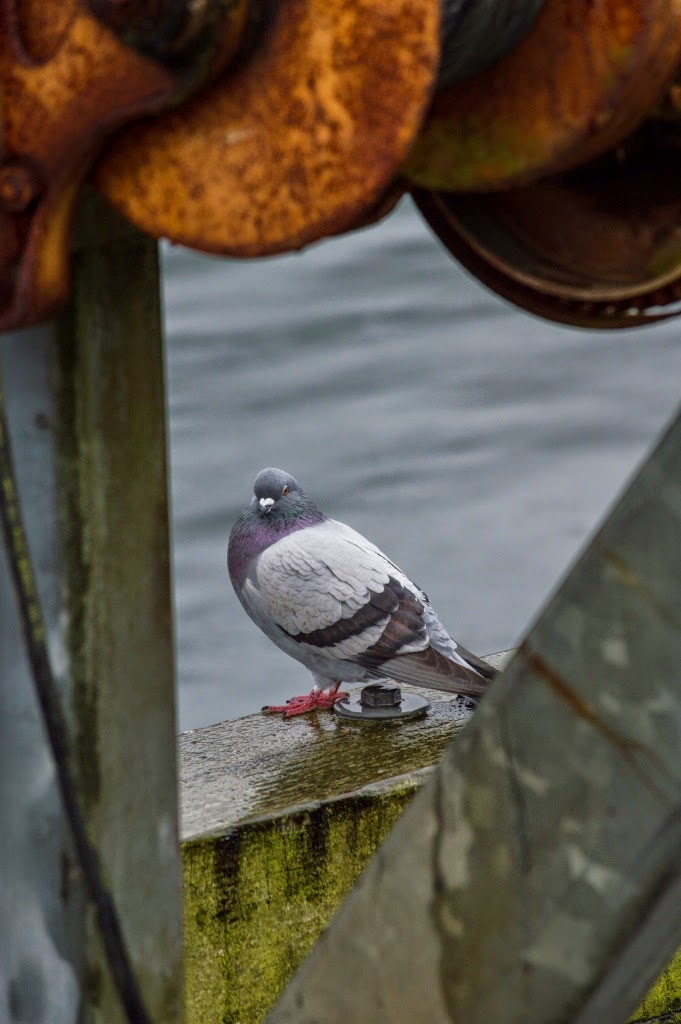.jpg) |
| Foreground and background are out of focus. We are led to focus on the bird. |
Since the Renaissance, European
art has been focused on perspective - the illusion of three
dimensions on a flat surface. Photography, when it was first
introduced, was quickly seized upon by artists as a 3D aid and as a
new version of seeing. Vermeer used the camera even before it was
possible to make a exposed negative and print from it to capture a
scene or portrait ( watch the documentary 'Tim's Vermeer'). Before
that though, art around the world was not so wrapped up in this
obsession with depth. My developing interest is in investigating ways
to explore that sense of three dimensional space with a camera
without taking it for granted.
.jpg) |
| Not by focus, but by severely limiting what is in the frame. |
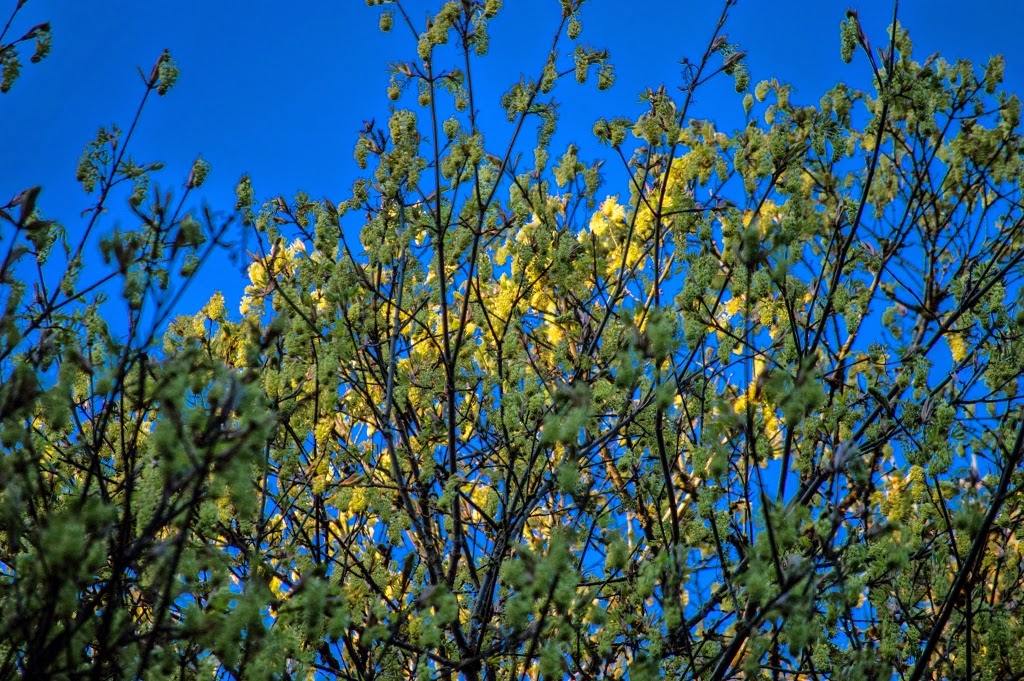.jpg) |
| Although the maple blossom and the sky are far apart in depth, the flat blue acts like a simple blue backdrop. |
In California, photographers
like Edward Weston and Ansel Adams were intentionally using small
apertures to capture great depth of field. That was how the world
was, they argued, and the human eyes should roam across the two
dimensional print, bringing different places into focus in their eyes
just as they did for the three dimensional reality that the camera
had captured. Even today their photographs using this idea are pretty
impressive!
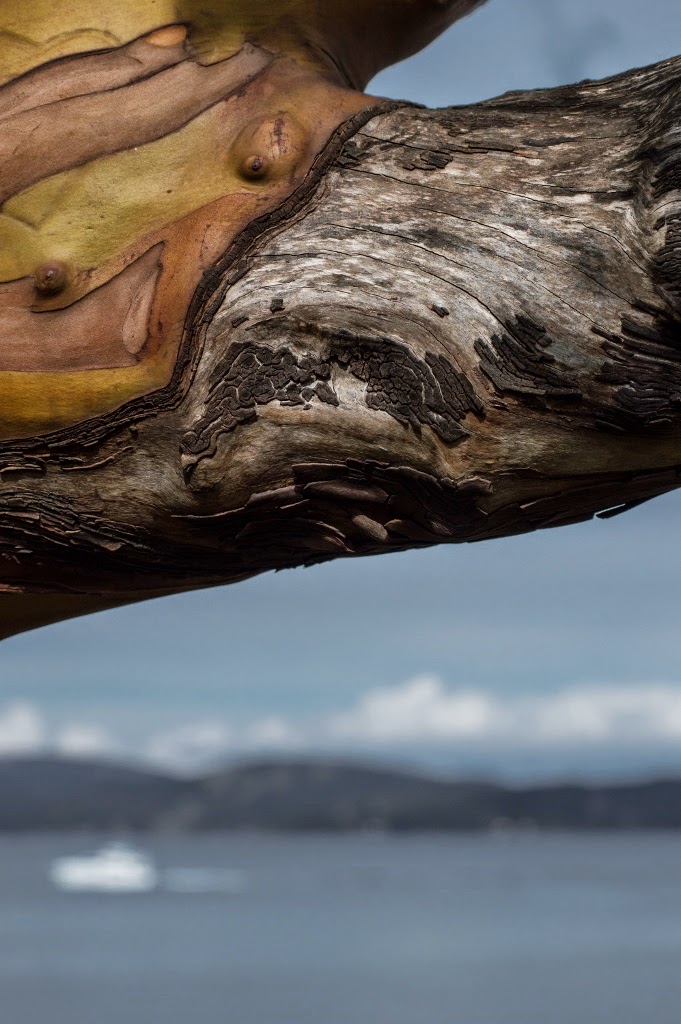.jpg) |
| Depth of field, but there is enough fuzzy information to provide interest and context. The background has work to do in the composition |
Other photographers however,
were more attracted to the effects to be had from shallow depth of
field and once the general public caught on to how to manipulate
aperture and thereby select the depth of field, and faster lens' were
available to permit endless variation, the idea of using shallow
depth of field became an important part of photographic practice. A
sharply focused near subject could be separated from a softly blurred
background. And that technique is standard practice to this day. So
standard that we have forgotten what came before.
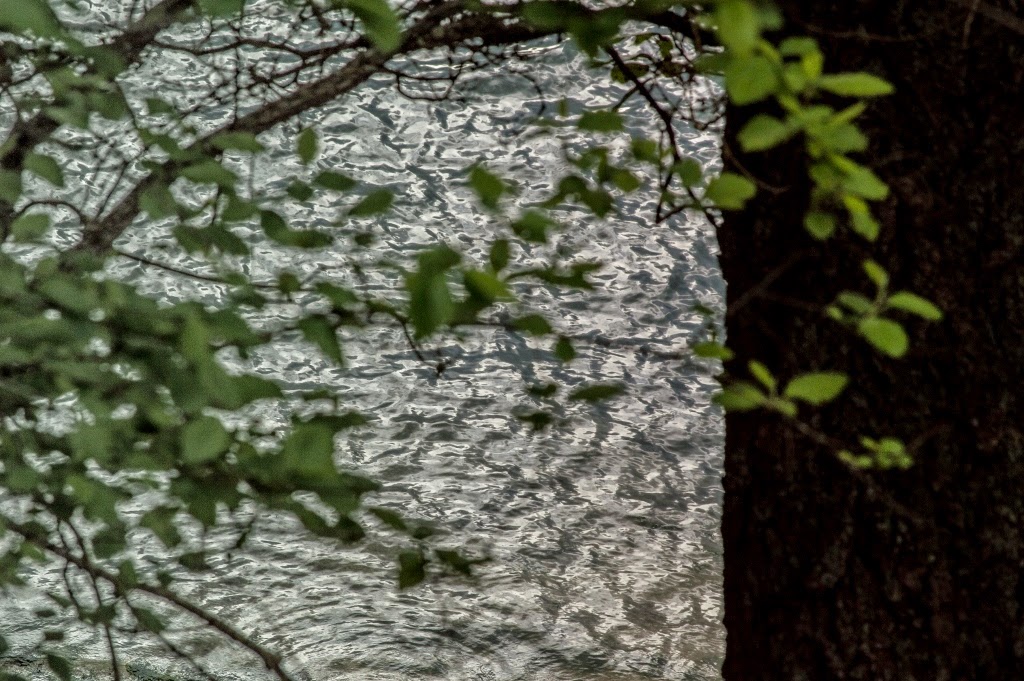.jpg) |
| By focusing on the water texture, I have created an almost flat screen. ( my personal favorite ) |
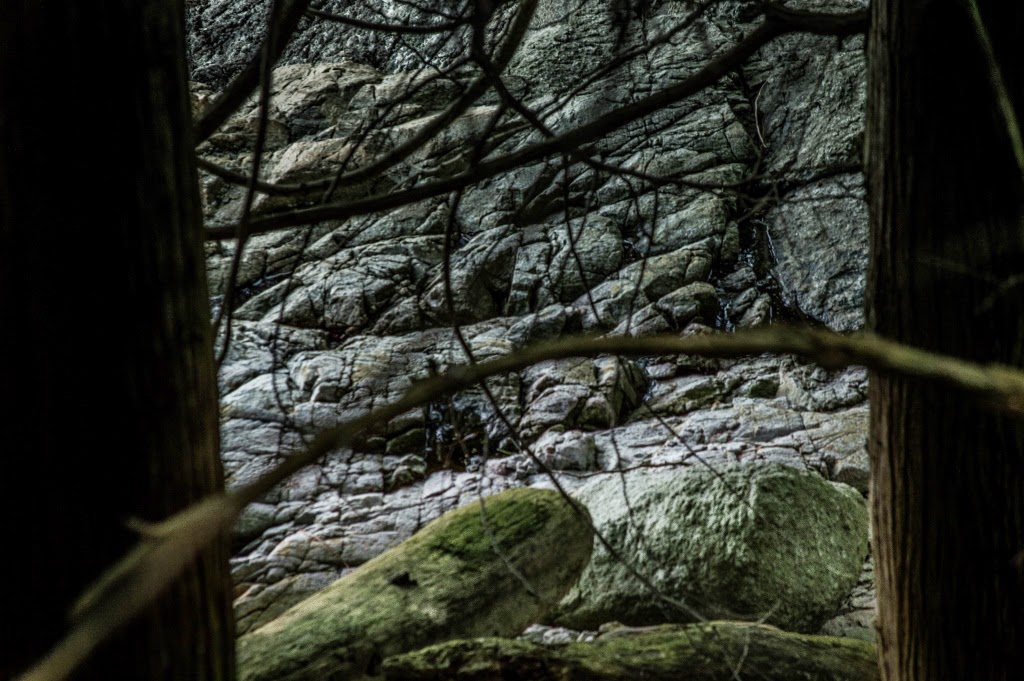.jpg) |
| I have limited and constructed a shallow, textured space. |
My personal challenge was to
question this orthodoxy: to start with accepted practice and then
veer off in, for me at least, new directions. We are accustomed to
the process of framing as we prepare to snap our picture, - what is
in the frame and what is left out -, and it is a powerful way of
selecting our main subject and avoiding the distractions that lie all
around. What then if one were to apply this same skill set to what is
in the space inside the frame. When we lower our viewfinder so the
sky is not in the photograph we have reduced the implied depth in
three dimensions. We have controlled it. And when we zoom in, or
approach our subject more closely so the background becomes less
obvious we have done this even more.
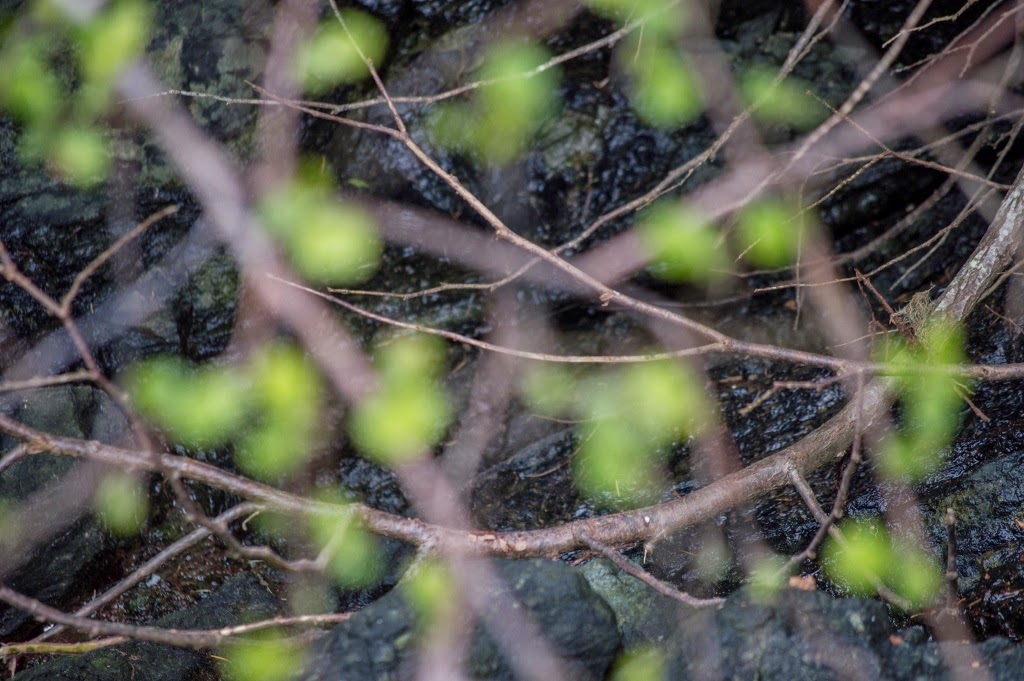.jpg) |
| The new leaves are out of focus and the background is sharp, but it is the lines and blobs that dominate the composition. |
Where could I begin? What would
I find? It is Spring here on the West Coast so naturally enough I
found blossoms and fresh green leaves, so I began to compose
consciously for a controlled sense of dimensionality - shallow depth
of field yes, but also limited distance, textured forms, and so on. I
found a world view that was quite unique, a new take.
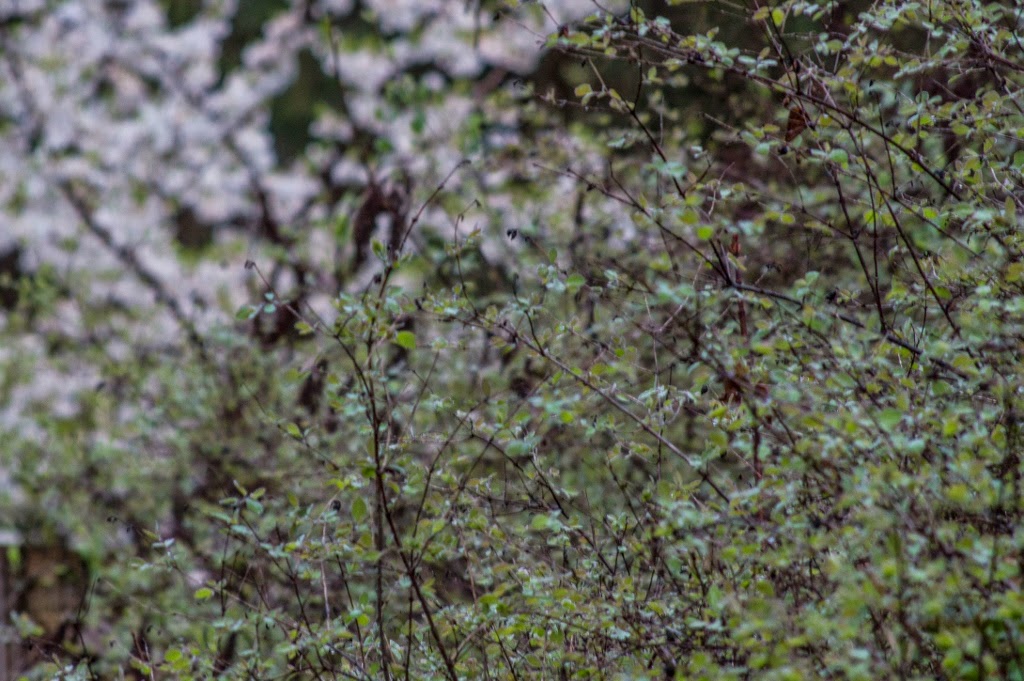.jpg) |
| Sharp and soft focus , but the textures dominate. |
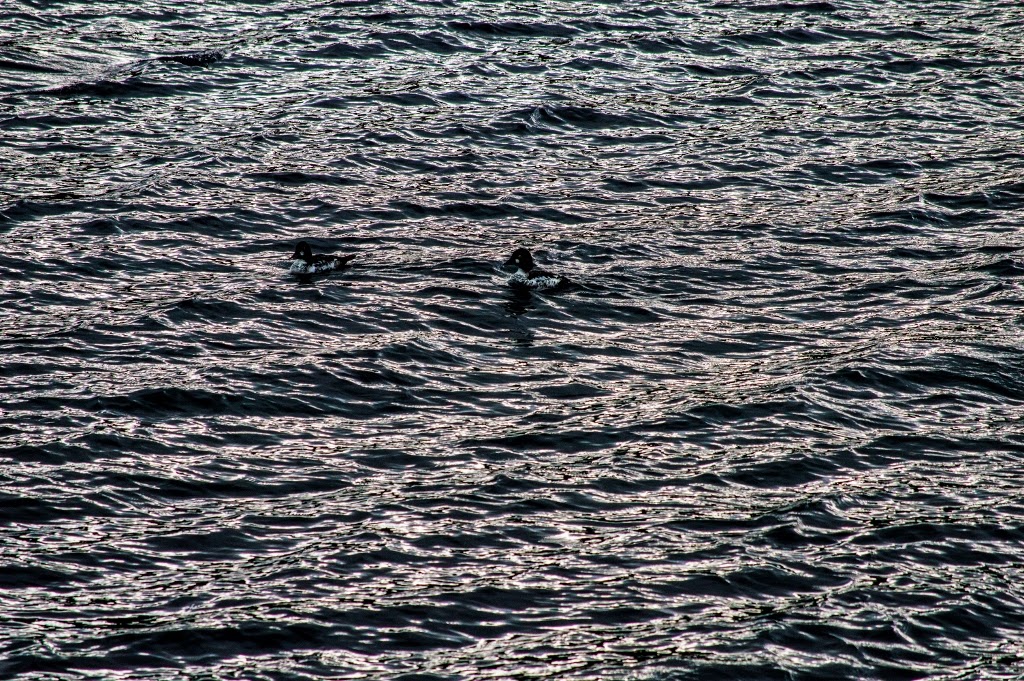.jpg) |
| Yes there are two ducks to provide a point of focus, but the waves provide an almost flat surface texture. |
Now I can use my frame to
control what is in and out of the frame and also control depth by
means other than simply using f stops. I can think my way into
my composition in 3 dimensions*.
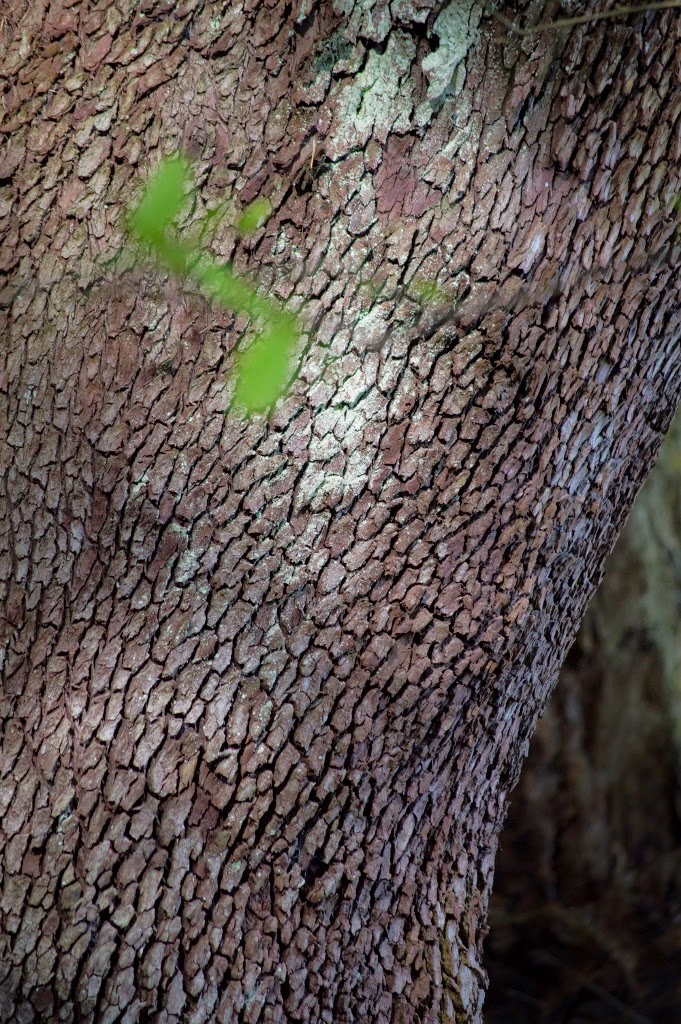.jpg) |
| The wind stirs the fluttering leaves against a solid textured form. |
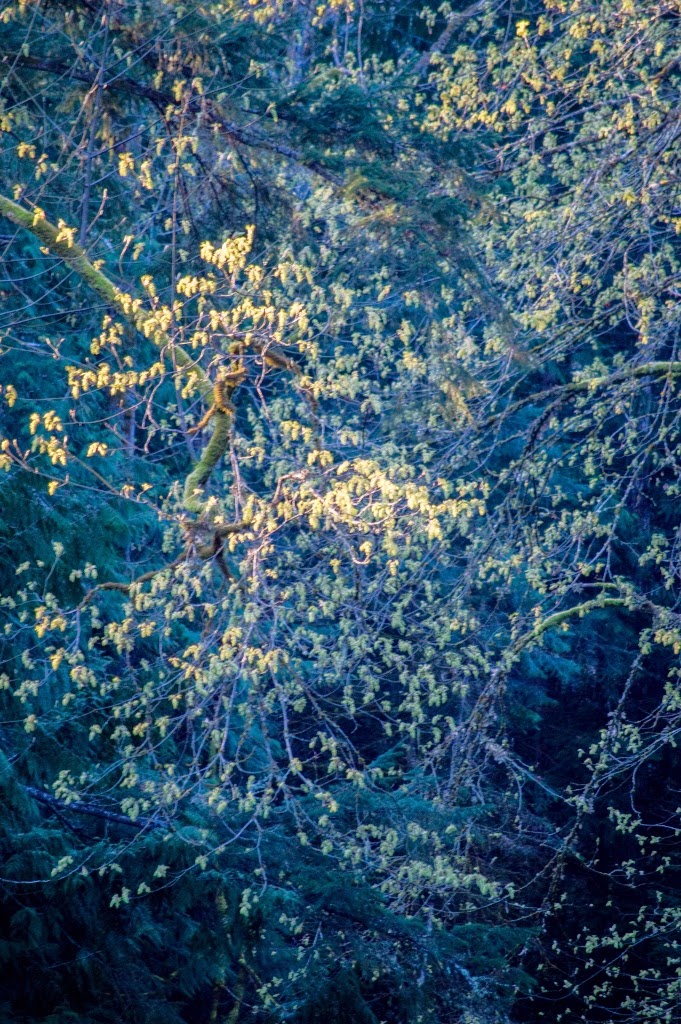.jpg) |
| A very busy image, but there is separation between maple branches and the darker and bluer background. The whole ,is really composed within a shallow depth. |
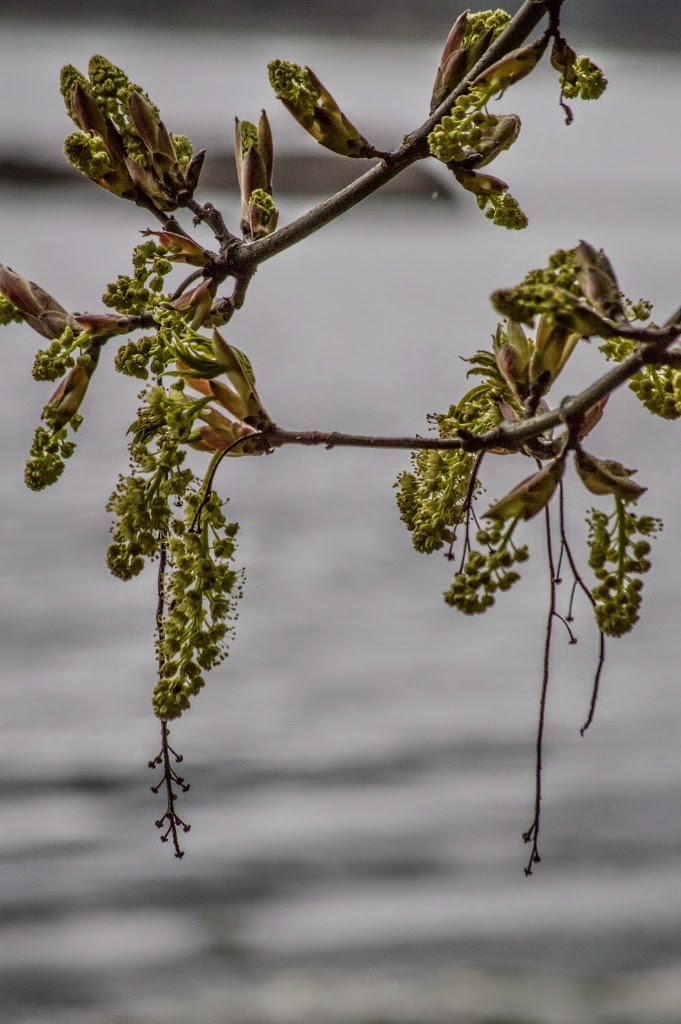.jpg) |
| A standard depth of field photograph using a larger aperture to separate the maple blossoms from the background. |
*Since the invention of the
photograph around a hundred and fifty years ago the visual arts have
also been breaking away from perspective and towards a different way
of representing depth. Picasso and others, perhaps influenced by
newly discovered prehistoric cave paintings and art from 'primitive'
cultures, began to work towards a more shallow space articulated by
colour, form and texture. Hans Hofmann spoke of 'push – pull' to
refer to the relationships between the elements of composition in his
lessons on Abstract Impressionism.
.jpg)
No comments:
Post a Comment